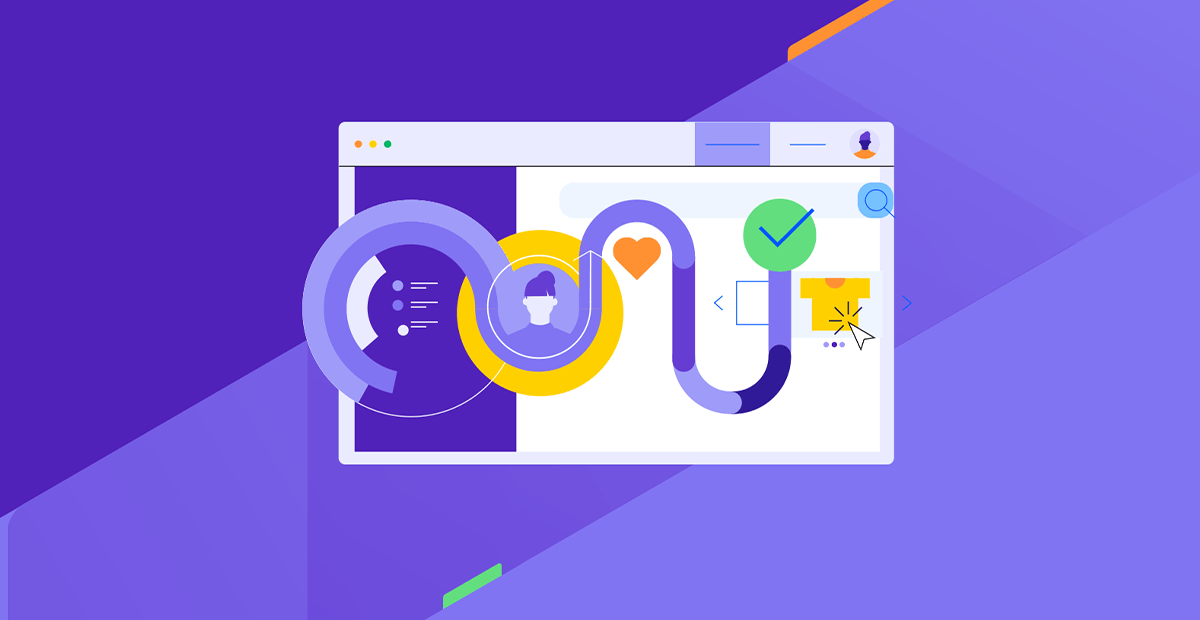The Pivotal Role of Customer Data Platforms in Driving Business Success

The customer data platform (CDP) takes in information, organizes it and then pushes the results to where you can make good use of it.
The world of customer experience is undergoing a profound shift. Not so long ago, companies could rely on a handful of tried-and-true channels to reach their customers—a TV ad here, a direct mail piece there, perhaps a billboard or two. Interactions were relatively infrequent and one-sided.
But times have changed. Today, customers are interacting with brands across an ever-expanding array of touchpoints. We’re talking websites, mobile apps, social media, email, live chat, in-store interactions, you name it. This omnichannel reality presents a tremendous opportunity to build deep, lasting relationships with customers.
However, it also presents a formidable challenge. With customer data spread across dozens of disconnected systems, how can companies possibly provide a cohesive, personalized experience? It’s like trying to put together a jigsaw puzzle when the pieces are scattered across different rooms of the house.
Enter the customer data platform, or CDP for short. CDPs have emerged as the key to solving the customer data conundrum. They act as a central nervous system for customer data, ingesting information from all those disparate touchpoints, cleaning and organizing it, and then pushing it out to the various systems that need it.
What Is a Customer Data Platform (CDP)?
The CDP Institute defines a CDP as “packaged software that creates a persistent, unified customer database that is accessible to other systems.” This centralized repository brings together data from all your disparate sources, both online and offline, into one clean customer profile. That unified view enables marketing and customer experience teams to segment, analyze and orchestrate personalized experiences across channels.
At a high level, a CDP performs four critical functions:
- Data collection: It gathers customer data from all those different touchpoints we talked about—your website, your mobile app, your CRM system, your point-of-sale system and so on.
- Data governance: It cleans and normalizes all that data, making sure it’s accurate and conforms to your data standards. Think of it as quality control for your customer data.
- Profile unification: This is where the magic happens. The CDP takes all that cleaned data and stitches it together into a single, unified view of each customer. So instead of seeing a bunch of disconnected data points, you see a complete picture of who each customer is and how they’ve interacted with your brand over time.
- Activation: Finally, the CDP makes those rich, unified profiles available to all the different systems that need them. This could be your email marketing platform, your advertising tools, your customer support software, etc. By providing these systems with a shared view of the customer, the CDP enables coordinated, personalized experiences across every touchpoint.
Why Is a CDP Necessary?
Businesses across all industries are facing an increasing threat of disruption driven by data and technology. A 2018 study by Forbes called Data Versus Goliath revealed that 89% of executives see a high risk that their business will be disrupted by new technologies. Physical retail stores are closing at a rapid pace, hotels face competition from sites like Airbnb, and automakers are being challenged by ride-sharing and electric vehicle startups. No industry is immune.
To survive in this environment, businesses need to get closer to their customers and deliver more personalized, contextual experiences across every touchpoint. In fact, research shows that customer experience is now the key battleground for business growth and retention. But taking a siloed, campaign-driven approach focused only on marketing funnel metrics is no longer sufficient. Leading companies are shifting to an omnichannel customer lifecycle view.
The problem is that managing these relationships at scale is extraordinarily difficult with today’s fractured data landscape. Essential customer data lives in disconnected systems across the organization. IT is flooded with requests for custom integrations and reports. Marketers spend more time wrangling data than deriving insight from it. The entire customer experience suffers from fragmented, inconsistent touchpoints.
Meanwhile, expectations for AI continue to rise across industries. Executives, strategists and marketers expect AI will help create better customer experiences. But none of those benefits can be realized without centralized, unified customer data as the foundation. AI and other emerging technologies simply amplify the garbage in, garbage out dynamic of dirty data.
This perfect storm of disruption risk, shifting strategies, exponential data growth and siloed systems is what’s driving massive demand for the category of software called the customer data platform.
Benefits of a Customer Data Platform
Let’s start with the core value a CDP brings—it breaks down those pesky data silos and unifies customer data from various sources into comprehensive, 360-degree profiles. With this centralized customer view, you can deliver personalized, contextually relevant experiences across all touchpoints.
Another key benefit is the ability to drive real-time, intelligent interactions. By detecting moments that truly matter to your customers, the CDP allows you to adapt your engagements dynamically based on up-to-the-moment insights. This level of responsiveness fosters deeper, more profitable relationships and lets you stand out from competitors still relying on static, generalized interactions.
Personalization is another key strength. By combining rich customer profiles with real-time signals, you can tailor content, offers and experiences at a granular, segment-of-one level across all channels—from websites and mobile apps to email, direct mail and beyond. This level of personalization is a true differentiator in today’s overcrowded marketplace.
Last but not least, CDPs streamline your tech stack and empower marketing teams with greater autonomy. Rather than relying on IT for every data integration, the CDP serves as a centralized hub, simplifying the process of incorporating new marketing technology (martech) applications. This agility allows you to adapt swiftly to market changes and capitalize on emerging opportunities before your competitors.
Staying Ahead of the Curve
Implementing a customer data platform is no small feat, but if you approach it the right way, the payoffs can be massive. Here’s generally how I’d recommend tackling it:
First up, you’ve got to get really clear on why you want a CDP in the first place. Is it to deliver more personalized customer experiences? Boost marketing ROI? Increase conversions across channels? Comply with data privacy regs? Once you nail down those key objectives, you can map out the specific requirements to meet them.
From there, it’s time to roll up your sleeves on the data side of things. Do a deep audit of all the customer data you’re currently sitting on—CRM, marketing automation, ecommerce, loyalty programs, you name it. Identify any gaps and map out how you’ll pipe all that data into your new CDP. Don’t underestimate this integration piece—it’s usually where implementations bog down.
Speaking of data, you can’t mess around with governance. Get your data quality, security and compliance ducks in a row early. Define rules around who can access what, masking policies, consent management—the whole nine yards to keep consumer data locked down.
Once all that’s squared away, it’s actually time to start configuring your CDP. Work hand-in-hand with your vendor’s team to get everything integrated, customer profiles stitched together across channels, and all the bells and whistles configured based on your use cases.
But don’t just flip the switch and call it a day. A CDP implementation requires serious change management—getting buy-in from stakeholders across marketing, sales, service, IT, even leadership. Make sure everyone is bought into the vision and you’ve got training programs lined up.
Once you do go live, keep optimizing and evolving based on performance. A CDP is never really “done”—it’s an iterative process as your data scope and use cases expand over time. Plan on continuous governance and certification, always updating those policies and processes.
Top Criteria for Evaluating Providers
So, when you’re looking at potential CDP vendors, what should you prioritize? For starters, you’ll want a solution that can easily integrate with all your different data sources and give you the ability to access and analyze raw data.
Robust AI and machine learning capabilities are also key, as is the ability to orchestrate personalized experiences across the entire buyer journey. And, of course, strong privacy and security compliance and top-notch customer support are non-negotiable. Read more about choosing the best CDP.
Now, let’s talk about Progress Sitefinity Insight. As part of the Sitefinity digital experience platform, Sitefinity Insight combines essential CDP capabilities with powerful analytics, personalization and AI-driven content optimization. Here’s why it stands out:
- 360-degree customer view: Sitefinity Insight enables marketers to create comprehensive customer profiles, capturing data from various touchpoints. You’ll gain insights into individual preferences and behavior.
- Contact properties and interactions: The Sitefinity Integration Hub brings customer and interaction data into Insight. This core function of a CDP ensures that you have a holistic view of your audience.
- Personalization made easy: With Sitefinity Insight, personalization becomes intuitive. Tailor content based on unique preferences, driving engagement and conversions.
- AI-driven capabilities: From attribution modeling to proactive email alerts, Sitefinity Insight leverages AI for smarter decision-making.
You can explore more about Sitefinity Insight Customer Data Platform software here.

